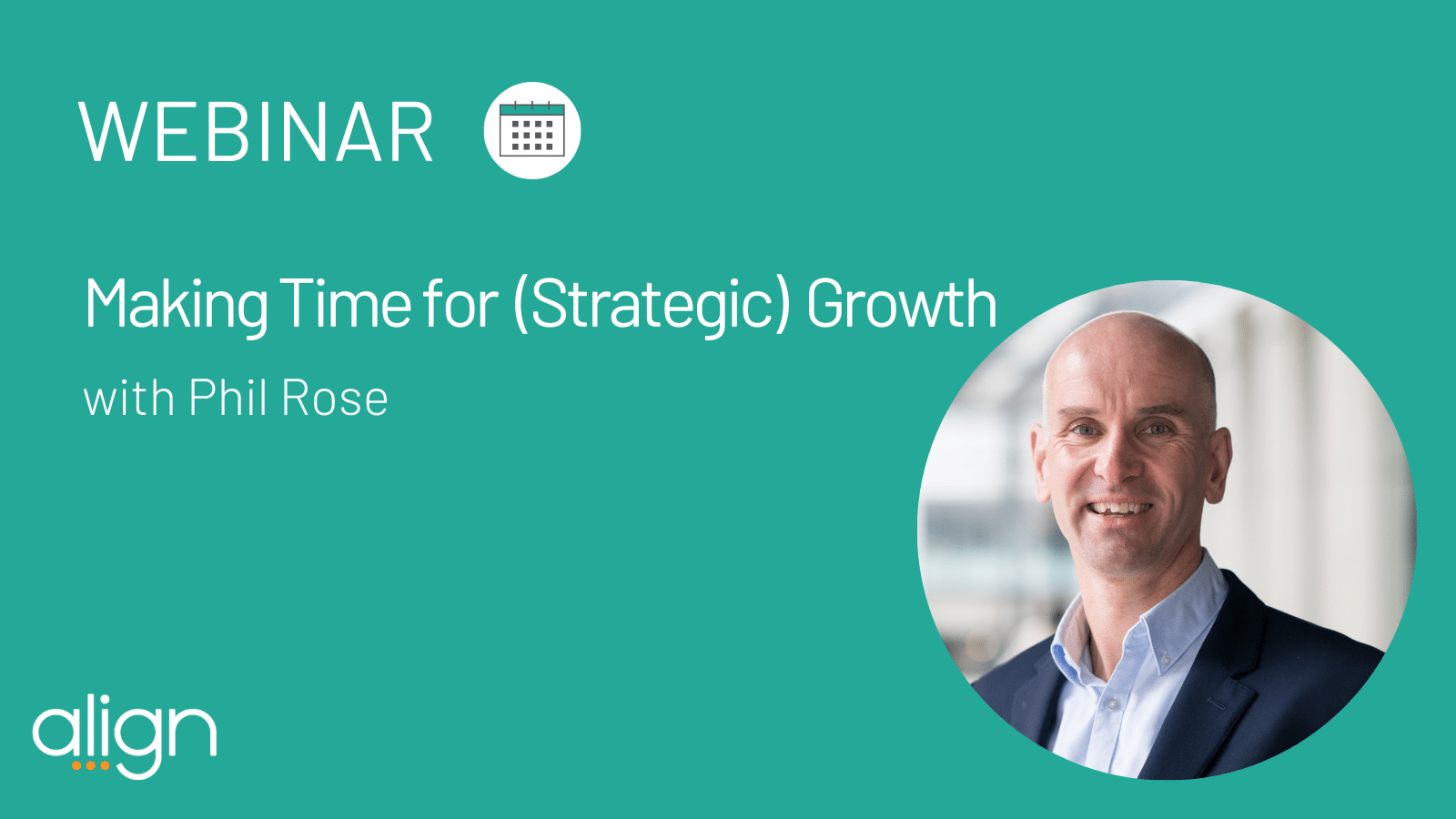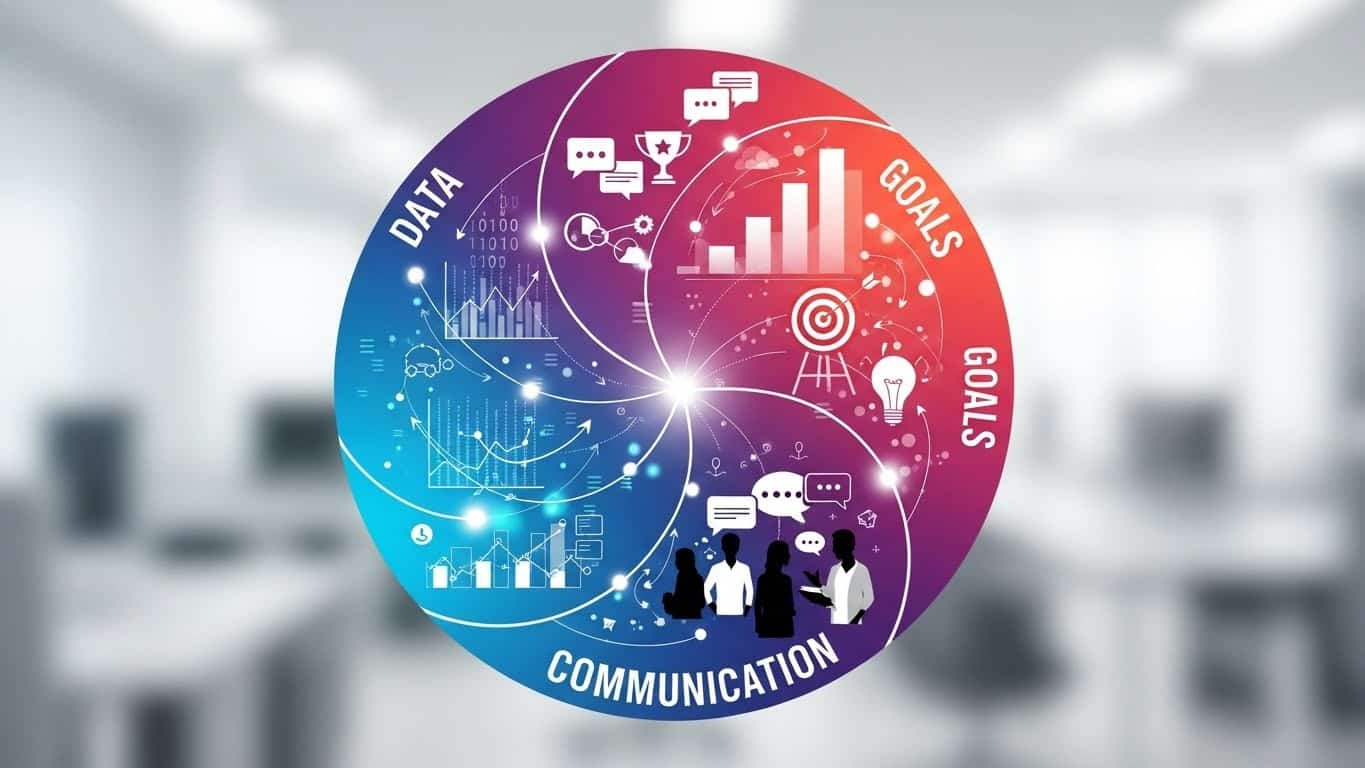Webinar Recap – Making Time for (Strategic) Growth
Scaling Up Certified Business Coach Philip Rose led a discussion on Making Time for (Strategic) Growth in Align’s latest coach webinar.
Phil’s passion for helping businesses scale with purpose is both personal and professional for him. As the founder of Ignium, he is a scaleup expert who works to inspire business leaders to achieve greatness for their companies.
Coaching and Consulting
Phil noted that coaching and consulting are not the same thing but are both necessary to scale. On one hand, consulting is about telling someone how to do something, whereas coaching is about asking questions to provide guidance rather than telling. Finding the right balance between the two is key to improving your weaknesses and capitalizing on your strengths.
What Does Growth Look Like?
Defining growth for your business is the first (and often most difficult) step. Growth looks different for different businesses and there are countless metrics that can be used to track it. Phil provided and explained his 3 Tools for Growth: Context, R IS E / C, and Capacity.
Context
Context is perhaps the most important thing when it comes to establishing a base for your team where everyone is on the same page. All team members should be in sync and understand not only the work to do, but their purpose for doing the work. Aligning your team around the why empowers individual team members to make good decisions based on a shared context. Then they can refine their priorities and develop a clear path to move forward in achieving goals.
R IS E / C
Phil’s acronym R IS E / C stands for Revenue, Infrastructure & Systems, Equity / Culture.
The acronym is a reminder of the four main elements that help create a well-functioning business: Revenue, Cost (Infrastructure & Systems), Equity, and Culture. Phil recommends mapping out which elements are occupying your time to determine where you need to focus more or less, and to do this by classifying your various operations into where they fit. A balance of all the elements is what will drive sustainable growth.
Capacity
In addition to context, business leaders must be attentive to the capacity of their team members so they can ensure the business doesn’t go into overload.
Several businesses fail while trying to do much. Phil noted that businesses maintain success when they operate at a “nearly full” level, rather than a completely full level. It’s important to leave room for inevitable mistakes and setbacks, because if your business is operating at full capacity, it has no bandwidth to deal with unexpected crises. And if there is anything we’ve learned from the past two years, it’s that crises can arise abruptly and derail everything we have going on. Even though it seems impossible to make time while we are busy fighting fires, the result will be well worth the investment of time because there is great detriment in misalignment.
Click the link below to access Phil’s slide deck!





